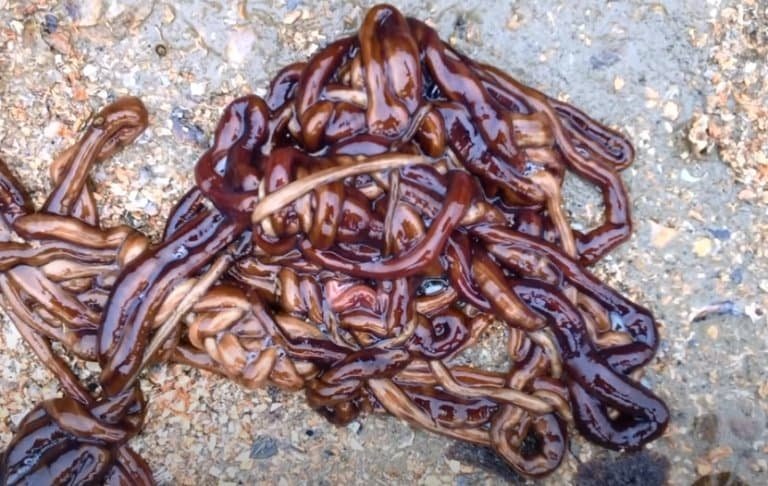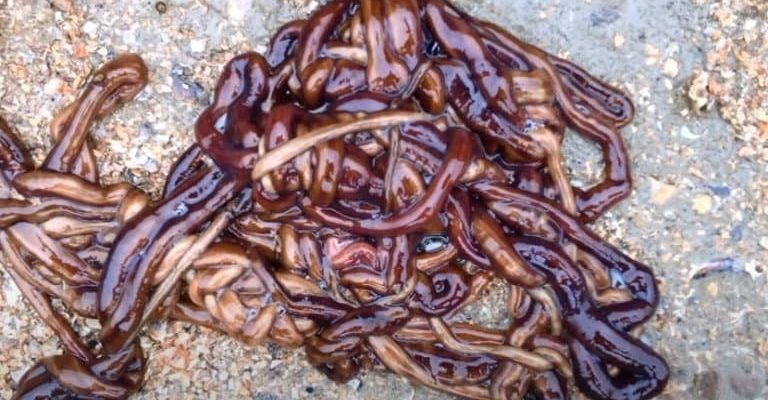
Let’s break it down, shall we? Imagine you’re exploring a vibrant underwater world. There are energetic fish darting around coral reefs, while strange creatures like bootlace worms silently glide through the sand. The question of whether these long worms are a danger can raise eyebrows. So, let’s dive in and see what we can discover about these intriguing worms and their impact on the ecosystem.
What Are Bootlace Worms?
Bootlace worms are indeed a sight to behold. As members of the phylum Nemertea, they’re often recognized for their long, thin bodies. They can sometimes stretch longer than a blue whale when fully extended! These worms can be found in various marine environments, including shallow waters and deeper ocean floors.
What’s especially cool about bootlace worms is their method of movement. They can move at incredible speeds, thanks to their unique muscular structure, which allows them to glide across surfaces effortlessly. However, this doesn’t necessarily mean they’re a threat to other marine life.
You might also find it interesting that bootlace worms are predators themselves. They mainly feast on small invertebrates and occasionally other worms. This predatory nature raises the question: do they pose a threat to fish or other wildlife?
Bootlace Worms and Their Diet
To understand whether bootlace worms are a threat, we have to explore their diet. Bootlace worms primarily consume small marine invertebrates, like shrimp and snails. Using a remarkable feature called a proboscis, they can extend a sticky, long appendage to grab their prey quickly.
Here’s the thing: while they do prey on other small animals, they aren’t large enough to target fish. Their prey-predator relationship primarily impacts the smaller, more delicate creatures in the ecosystem. So in a roundabout way, they play a role in keeping smaller populations in check, which can be beneficial for the overall health of their environment.
Are Bootlace Worms Dangerous to Fish?
The short answer is no—bootlace worms aren’t dangerous to fish. They’re not equipped to attack or harm fish in any way. Fish tend to swim above the ocean floor where these worms reside. While bootlace worms could affect smaller creatures, fish have little to worry about.
However, the presence of bootlace worms could suggest a healthy marine ecosystem. Their population indicates that the area has enough organic material and smaller invertebrates to sustain them. In this sense, they might indirectly contribute to a rich environment where fish can thrive!
Impact on Other Wildlife
The presence of bootlace worms contributes to the intricate web of life found in marine ecosystems. By feeding on smaller invertebrates, they help maintain balance, ensuring that no one species gets too dominant.
You might be thinking: “If they help balance smaller populations, does that mean they affect larger animals too?” In a way, yes. A healthy population of small fish and invertebrates contributes to the food chain, ultimately supporting larger predators, including fish. So, while bootlace worms might not directly threaten larger wildlife, they influence the ecosystem’s health overall.
Are Bootlace Worms Harmful to Humans?
Humans usually don’t come into direct contact with bootlace worms, as they prefer to burrow in sand and muddy sea floors. However, if you’re ever snorkeling or diving, you might spot one in its natural habitat.
While they’re not harmful, they do have a reputation for being slimy and slippery—definitely not the kind of creature you want to handle! If you’re curious, they produce a toxic substance that can cause irritation if they’re disturbed. So, it’s best to admire them from a distance rather than try to grab one!
Understanding Bootlace Worms in Ecosystem Management
In marine ecology, studying organisms like bootlace worms helps scientists understand and manage ecosystems better. Monitoring their populations gives insights into the health of marine environments. An increase or decrease in their numbers can signal changes in water quality, habitat loss, or shifts in other animal populations.
Conservationists pay attention to various sea creatures, including bootlace worms, to gauge environmental health. Protecting these ecosystems is essential, especially as marine biodiversity faces threats like pollution and climate change.
So, do bootlace worms pose any threat to fish or wildlife? The answer is more nuanced than a simple yes or no. While they are predators of smaller invertebrates, they don’t pose a direct threat to fish or larger wildlife. Instead, they play an essential role in maintaining the delicate balance of marine ecosystems.
As you explore the wonders of the ocean, keep an eye out for these fascinating creatures. Understanding their role can help us appreciate the complexity of our underwater world and the importance of every creature, no matter how small. Remember, each worm, fish, and habitat plays a part in the grand tapestry of life beneath the waves!

